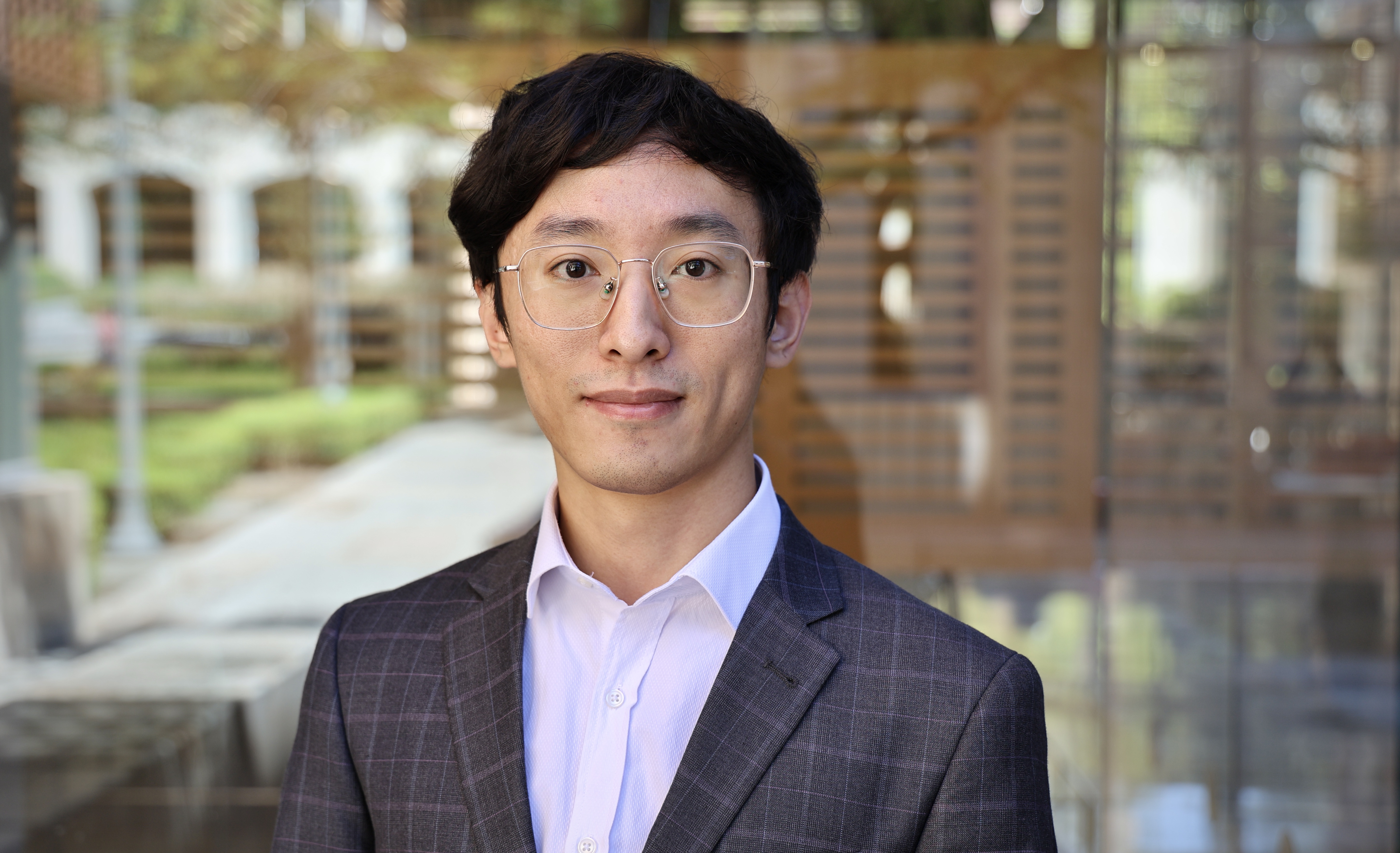Upcoming Event:
Mathew Hu, Ph.D. Candidate, Oden Institute
1 – 3PM
Wednesday Jul 16, 2025
Efficient high-rank approximations of the Hessian (normal operator) can accelerate seismic full-waveform inversion (FWI) and uncertainty quantification (UQ). In FWI, the Hessian encodes the local curvature of the FWI objective function. Approximations of the inverse of the Hessian may be used as a preconditioner for inexact Newton-Krylov algorithms or quasi-Newton algorithms, significantly reducing computational costs and improving recovery in deeper subsurface regions. In Bayesian UQ, the inverse of the Hessian is the covariance of a local Gaussian approximation to the posterior. Hessian approximations enable the construction of Markov chain Monte Carlo (MCMC) proposal distributions that faithfully capture the the directional scalings of the posterior, thereby enhancing the efficiency of MCMC algorithms such as generalized preconditioned Crank-Nicolson (gpCN) method.
Computing the exact Hessian is intractable for large-scale problems because the Hessian is only accessible through matrix-vector products, and performing each matrix-vector product requires solving costly partial differential equations. Moreover, the Hessian is high-rank, which means that low-rank Hessian approximation methods, normally employed in large-scale inverse problems, are inefficient. We adapt the well-established point spread function (PSF) method, and develop a pseudo-differential operator probing (PDO) method based on microlocal analysis. Both methods construct low-rank approximations of the Hessian's pseudo-differential symbol, which may be low-rank even if the Hessian is high-rank. The PSF method interpolates rows of the symbol, while the PDO method interpolates columns. Building on the observed duality between these two approaches, we further develop a novel approximation method that unifies their complementary strengths.
We validate these methods on a synthetic quadratic model, and on the Marmousi model, a synthetic constant density acoustic benchmark model in two spatial dimensions. Numerical experiments demonstrate that these high-rank Hessian approximations substantially reduce the computational costs in FWI, and enable balanced recovery across both spatial and frequency domains. In UQ, we observe that high-rank Hessian approximations are essential. MCMC samples computed using no Hessian approximation or a low-rank approximation explore the posterior extremely slowly, providing little meaningful statistical information after tens of thousands of iterations and causing the variance to be underestimated. At the same time, the effective sample size (ESS) is overestimated, providing false confidence. In contrast, MCMC samples generated using the high-rank Hessian approximations provide meaningful statistical information about the posterior and more accurately assess the posterior variance.
Mathew Hu is a CSEM Ph.D. candidate supervised by Prof. Omar Ghattas. His research interests include optimization and uncertainty quantification for large-scale inverse problems. Prior to joining CSEM, he earned a B.S. in Mathematics and Applied Mathematics from Fudan University and an M.S. in Mathematics from the Courant Institute of Mathematical Sciences at New York University.
